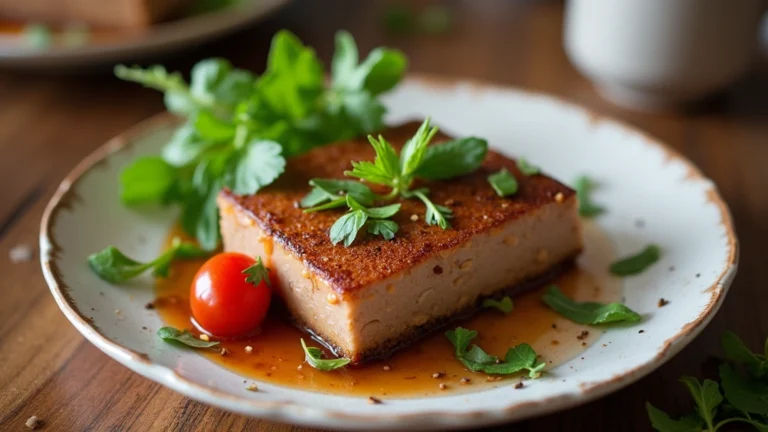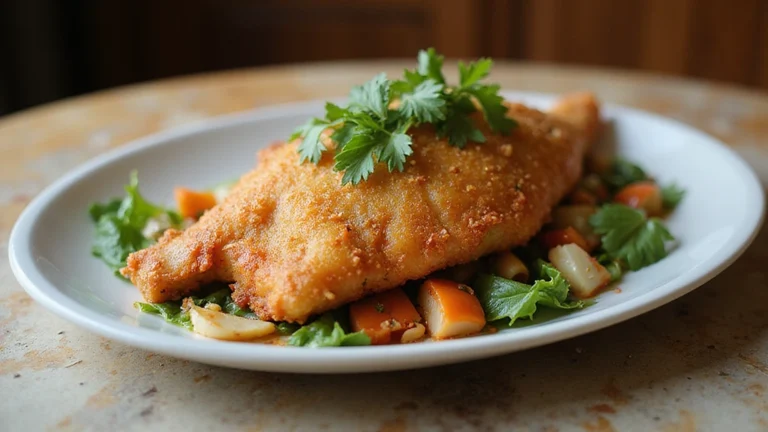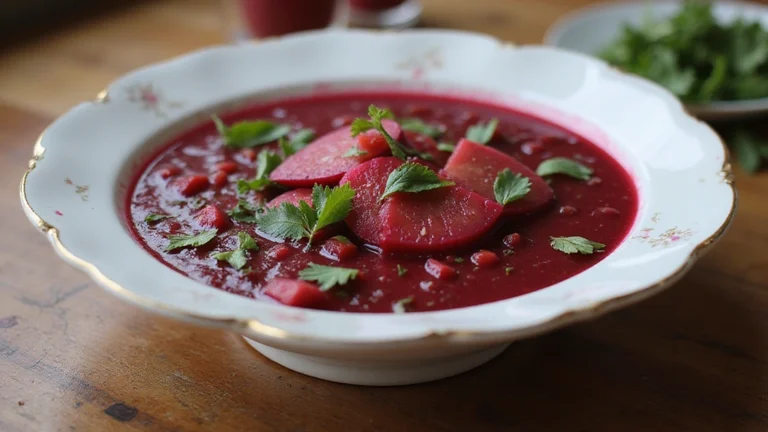
Imagine biting into a crispy, golden delight that sends a burst of savory flavors dancing across your taste buds. That’s the joy of a pork fritter, a beloved dish that has found its way onto countless plates across the Midwest and beyond. You might wonder, what exactly makes this dish so special?
A pork fritter is essentially a thinly sliced piece of pork, tenderized to perfection, coated in a seasoned breading, and fried until it’s irresistibly crispy. It’s comfort food that warms the soul and fills the belly, often served between buns as a sandwich or alongside your favorite sides for a hearty meal. Whether you’re a long-time fan or a curious newcomer, diving into the world of pork fritters is a tasty journey worth taking.
Necessary Ingredients for Pork Fritters
To start crafting your pork fritters, gathering the right ingredients is crucial. The following breakdown ensures you have everything required for this indulgent dish.
List of Ingredients
Prepare the following items to make pork fritters:
- Pork Cutlets: 4 pieces (about 1 pound)
- Flour: 1 cup, preferably all-purpose, for dredging
- Eggs: 2 large, beaten
- Breadcrumbs: 2 cups, seasoned for enhanced flavor
- Salt: 1 teaspoon, or to taste
- Black Pepper: ½ teaspoon, freshly ground
- Garlic Powder: ½ teaspoon
- Onion Powder: ½ teaspoon
- Vegetable Oil: for frying, approximately 2 cups, depending on the size of your pan
Choosing the Right Type of Pork
Selecting the appropriate cut of pork is essential for achieving tender and flavorful pork fritters. Pork loin or tenderloin are prime choices, offering lean, tender meat that cooks quickly and evenly. Slice the pork into thin pieces, about ¼ inch thick, ensuring each slice is even to promote uniform cooking. If needed, pound the slices gently between two pieces of plastic wrap to tenderize them further and achieve the optimal thickness. Opt for fresh pork with a pink hue and a firm texture, a sign of quality and freshness that, once prepared, yields a satisfying and crispy fritter.
Equipment Needed
Embarking on your culinary adventure to create pork fitters entails having the right equipment. This selection of tools ensures that your fritters are tender inside and crispy on the outside.
Kitchen Tools for Preparing Pork Fritters
Preparing pork fritters requires specific kitchen tools to ensure the process is efficient and the results are exceptional:
- Meat Tenderizer: Using a meat tenderizer helps achieve the signature thinness and tenderness of the pork cutlets. This tool is essential for breaking down the fibers in the pork.
- Sharp Knife: A sharp knife assists you in slicing the pork cutlets uniformly, which is crucial for even cooking.
- Mixing Bowls: You need several mixing bowls for different components of the breading station – one for flour, one for beaten eggs, and another for breadcrumbs.
- Skillet or Deep Fryer: A heavy skillet or a deep fryer is necessary to fry the pork fritters. The correct temperature control ensures that each piece is golden brown and crispy.
- Thermometer: To avoid under or overcooking your pork fritters, a thermometer will help you maintain the oil at an ideal temperature, typically between 350°F to 375°F.
- Paper Towels: Having paper towels handy is beneficial for draining excess oil from the fried pork fritters, enhancing their crispiness.
- Tongs: Tongs are perfect for safely flipping and removing fritters from hot oil.
With these tools, you are well-equipped to create delicious pork fritters that boast the perfect balance of textures and flavors.
Preparing the Pork
In this part of your journey to mastering pork fritters, the focus turns to the initial preparation steps which ensure your pork is ready to transform into delicious fritters.
Cleaning and Cutting the Pork
Begin by thoroughly cleaning your pork, specifically if using loin or tenderloin, which are ideal for their tenderness and flavor. Rinse the pork under cold water and pat it dry with paper towels. This step removes any impurities and prepares the surface for even cooking.
Next, cutting the pork appropriately is essential. Place the cleaned pork on a stable cutting board. Using a sharp knife, slice the pork into thin pieces, about 1/4 inch thick. This thickness ensures that each piece will cook quickly and evenly, providing the perfect texture for your fritters. For uniform slices, keep the knife at a consistent angle and apply even pressure as you cut.
Marinating the Pork
Marinating adds depth of flavor and tenderizes the meat further. Prepare a marinade by combining ingredients such as garlic powder, onion powder, salt, pepper, and a hint of paprika in a mixing bowl—these spices complement the pork’s natural flavors. If you prefer a bit of tang, add a tablespoon of apple cider vinegar.
Place the pork slices in the marinade, ensuring each piece is well-coated. Cover the bowl with plastic wrap and refrigerate it. Allow the pork to marinate for at least 2 hours; this duration lets the flavors penetrate deeply and softens the pork fibers, enhancing the overall taste and texture of your fritters.
By following these steps, you transform basic pork into the star component of your pork fritters.
Creating the Batter
With your pork perfectly prepared and marinated, the next step involves creating the batter that encapsulates this tender meat, transforming it into the crispy delight known as a pork fritter.
Ingredients for the Batter
Selecting quality ingredients for your batter ensures that the result complements the flavors of your pork. The basic elements include:
- All-purpose Flour: 1 cup offers the necessary structure.
- Cornstarch: 2 tablespoons, to promote crispiness.
- Baking Powder: 1 teaspoon, to ensure lightness and puff.
- Salt: 1/2 teaspoon, to enhance flavor.
- Egg: 1 large, binds the ingredients effectively.
- Milk: Approximately 3/4 cup, as needed to achieve a thick but pourable consistency.
- Optional Seasonings: Herbs like parsley or spices such as paprika, depending on your taste preferences.
Mixing the Batter
Combine the dry ingredients first. In a medium-sized mixing bowl, whisk together the flour, cornstarch, baking powder, and salt. Ensure uniformity, as this prevents clumps when you add liquids.
In a separate container, beat the egg and gradually incorporate the milk. Slowly pour this mixture into the dry ingredients while stirring. This gradual addition ensures smooth integration. Achieve a consistency similar to pancake batter—it should freely coat the back of a spoon but not drip off overly quickly.
Once mixed, let the batter rest for 5 to 10 minutes, allowing the flour to fully absorb the liquid and the baking powder time to activate. This step contributes significantly to the fluffiness and crisp of the final product.
Cooking the Pork Fritters
After preparing your batter as described in the previous steps, it’s time to cook your pork fritters to golden perfection.
- Preheat Your Oil: Heat the oil in a deep fryer or a large skillet to 350°F (175°C). Use a cooking thermometer to ensure the temperature is correct since proper heat is essential for crispy fritters. If the oil is not hot enough, the pork fritters absorb excess oil and become soggy.
- Prepare for Frying: While the oil heats, remove the pork cutlets from the batter, allowing excess to drip off. Prevent clumps by laying them out on a rack before they go into the fryer.
- Fry the Pork Fritters: Place the pork cutlets carefully into the hot oil. Fry them in batches to avoid overcrowding, which can lower the oil’s temperature and prevent fritters from cooking evenly. Each batch takes about 4 to 5 minutes to cook, turning once to ensure both sides are evenly golden and crispy.
- Check for Doneness: Ensure each pork fritter reaches an internal temperature of 145°F (63°C) using a meat thermometer. This step confirms that the pork is cooked safely and retains its juices.
- Drain and Serve: Once fried to a crispy golden brown, remove the pork fritters from the oil and place them on a plate lined with paper towels to drain excess oil. Serve hot for the best flavor and texture. Enjoy them plain or with a side of your favorite dipping sauce.
Baking Option
After preparing your pork fritters as described, baking offers a healthier alternative to frying. This method helps maintain a delightful crispiness without the excess oil.
Tips for Achieving a Crispy Texture
Achieving a crispy texture in the oven starts with the right preparation of your pork fritters. Here are key steps to ensure your baked pork fritters turn out just as tempting as their fried counterparts:
- Preheat Your Oven: Set your oven to 425 degrees Fahrenheit. A higher temperature ensures the exterior of the pork fritters becomes crispy.
- Prepare Baking Sheet: Line a baking sheet with parchment paper and lightly grease it with cooking spray. This setup helps prevent the fritters from sticking and promotes even crispiness.
- Breading Properly: Double coat your pork cutlets; first dip them in the batter, then in breadcrumbs. Consider pressing the breadcrumbs onto the surface to enhance the crust.
- Placement: Space the breaded fritters evenly on the baking sheet. Adequate space allows hot air to circulate around each fritter, aiding in an even crisp.
- Turning: Halfway through the baking process, carefully flip each fritter. Use a spatula to ensure they keep their integrity. This step is crucial for achieving a uniformly crispy exterior.
Serving Suggestions
After mastering the preparation and cooking of pork fritters, explore the best ways to serve them to enhance their flavor and presentation.
Accompaniments and Side Dishes
Pork fritters pair wonderfully with a variety of side dishes. Consider the following options to complement their crispy texture and savory taste:
- Coleslaw: A classic choice, coleslaw provides a crunchy, refreshing contrast to the rich fritters.
- Potato Salad: Potato salad, especially one with a mustard-based dressing, offers a creamy texture and tangy flavor that balances the dish’s richness.
- Applesauce: For a hint of sweetness, serve your fritters with applesauce. This addition is particularly popular in Midwestern cuisine.
- Green Beans: Sautéed or steamed, green beans provide a healthy, fibrous component to the meal.
Each side dish not only adds to the meal’s nutritional value but also enhances the dining experience by introducing various flavors and textures.
Presentation Tips
Presentation plays a crucial role in making your pork fritters even more appealing:
- Garnish Wisely: Sprinkle chopped herbs like parsley or chives over the fritters to add freshness and a pop of color.
- Use Colorful Plates: Serve the pork fritters on vibrant plates. Contrasting colors can make the dish stand out and look more enticing.
- Arrange Neatly: Place the fritters on a platter with space between each piece. It prevents them from becoming soggy and helps maintain their crispiness.
- Add a Dip: Accompany the fritchers with a small bowl of dipping sauce such as honey mustard or barbecue sauce to enhance their flavor and provide a visually appealing element.
These presentation tips ensure your pork fritters look as good as they taste, offering an enjoyable dining experience. By focusing on both taste and appearance, your meals not only satisfy the palate but also delight the eyes.
Common Issues and Troubleshooting
When making pork fritters, you might encounter a few common issues that can affect the quality and safety of your dish. Here’s how to troubleshoot them effectively.
Handling Undercooked Pork
Achieving the perfect doneness in pork fritters is crucial for both taste and health reasons. Pork needs to reach an internal temperature of 145°F to ensure it’s safe to eat. Here’s what you can do if you find the pork is undercooked:
- Double-check the internal temperature with a meat thermometer at the thickest part of the fritter.
- Return undercooked fritters to the heat source, whether it’s frying oil or an oven. If using an oven, set it at 350°F and monitor closely.
- Increase cooking time slightly for thicker cuts, adjusting the heat to avoid burning the exterior.
Always keep a close eye on the heat level and use a timer to prevent undercooking.
Dealing With Batter That Doesn’t Stick
If your batter slides right off your pork cutlets, your fritters won’t have that ideal crispy texture. Follow these steps to ensure your batter sticks properly:
- Dry the pork cutlets thoroughly with paper towels before dipping them in any batter. Moisture is a common culprit for batter detachment.
- Dust the pork lightly with flour before dipping them into the batter. This provides a rough surface for the batter to cling to.
- Chill the battered pork cutlets for about 15-20 minutes in the refrigerator before frying. This helps the batter set and adhere better during cooking.
Implementing these solutions will help you address the typical issues encountered while preparing pork fritters, ensuring each batch turns out delicious and well-cooked.
Conclusion
Now that you’ve got the scoop on crafting the perfect pork fritter, why not give it a try? Remember, the key to a great fritter lies in the details—properly tenderized pork, a well-adhered batter, and the right cooking technique. Whether you’re frying them up for a family dinner or a friendly gathering, these crispy delights are sure to impress. So grab your skillet or heat up your oven and get ready to enjoy the wonderful world of pork fritters. Happy cooking!



